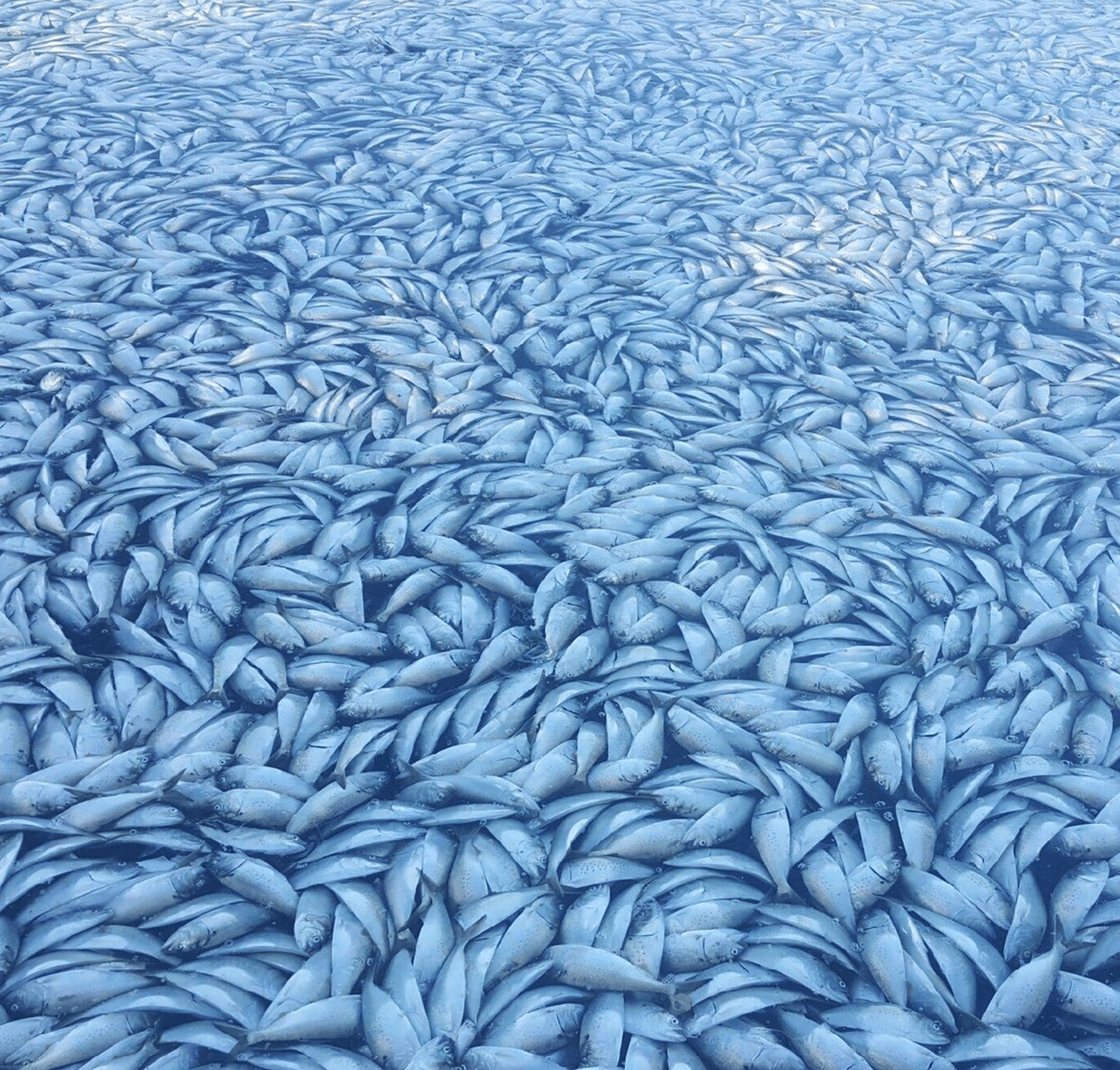

Locals in Hampton Bays, New York woke up to an odd sight earlier this week. The nearby canal has taken on a silvery sheen, but it wasn’t an early frost or the first signs of winter. Instead it was thousands upon thousands of dead fish.
The sight was disturbing, but the fish kill wasn’t a portent of the end times, or even a case of some dreadful pollutant. The New York State Department of Environmental Conservation and other experts believe that the most likely explanation is that the fish (which are small bait fish known as bunker) ended up in the wrong place at the wrong time. While fleeing a predatory school of bluefish, they likely got trapped in a dead end where crowded conditions deprived them of oxygen.
Though they don’t live long in the air, fish do need oxygen to survive. After getting chased by the school of bluefish, they sought refuge in the Shinnecock canal, only to find that the locks of the canal were closed.
The Shinnecock canal is located on the South Fork of Long Island, and connects Shinnecock Bay to the Great Peconic Bay. The water level in the two bays isn’t equal, so a system of locks is used to help ships travel between the two. When the locks are closed, water flow between the two bays is limited, and ships (and fish) can’t get through.
Suddenly, instead of being a small fish in a big ocean, the victims found themselves trapped in a small space with thousands of their comrades. Just like humans (or any animal) trapped in a small space, they eventually ran out of oxygen and died.

Once the locks were opened the next morning, the dead fish floated out to sea, or were washed up on the banks. Many fishermen took advantage of the situation to gather up as many bunker as possible. Bunker, also known as menhaden, is a popular bait fish, now used to trap lobster and snare sea bass. It was once used as a component in industrial manufacturing of paints and cosmetics.

This isn’t the first time that this kind of fish kill has happened. A similar one occurred in Marina de Rey, California in 2014. Thousands of anchovies died in the harbor, presumably after trying to escape a predator.
So don’t assume that thousands of dead fish are a sign of the apocalypse, or the result of some sort of toxic waste leak. A fish kill might not look (or smell) pretty, but it’s hardly the end of the world.
